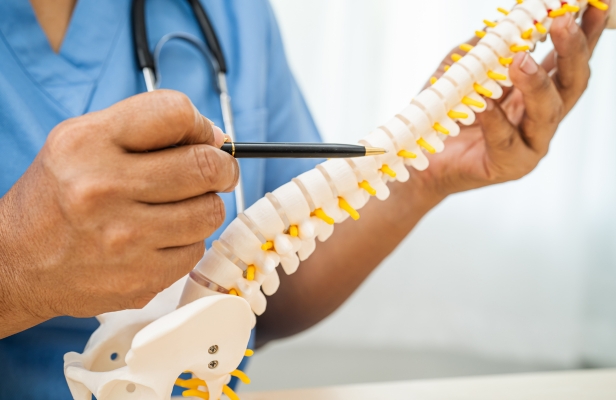Spinal Stenosis Treatment in Dallas
Spinal stenosis is a condition in which the spinal canal narrows, putting pressure on the spinal cord and surrounding nerves. This gradual narrowing can cause persistent back or neck pain, numbness, tingling, or weakness in the arms and legs. It most often affects older adults due to natural wear and tear on the spine. At Premier Pain Centers, our experienced pain specialists diagnose and treat spinal stenosis using advanced, non-surgical techniques.
With personalized care and evidence-based treatments, we focus on restoring comfort, improving mobility, and helping patients return to an active lifestyle. Premier Pain Centers offers trusted spinal stenosis treatment in Dallas designed to reduce pain and enhance long-term spine health.

What is Spinal Stenosis?
Spinal stenosis is a condition that occurs when the spinal canal becomes narrow, placing pressure on the nerves that travel through the spine. This compression can lead to pain, numbness, tingling, or weakness in the back, neck, arms, or legs. In Dallas, many patients experience spinal stenosis due to age-related changes, arthritis, or previous injuries affecting the spine.
Types of Spinal Stenosis
Spinal stenosis is generally classified into two main types:
Lumbar Spinal Stenosis
This type affects the lower back (lumbar spine) and is the most common form of spinal stenosis. It often causes leg pain, weakness, or cramping, especially when walking or standing for long periods.
Cervical Spinal Stenosis
This type occurs in the neck (cervical spine) and results from narrowing of the spinal canal in that area. It can lead to neck pain, stiffness, numbness in the arms or hands, and sometimes difficulty with balance or coordination.
Spinal Stenosis Causes
Spinal stenosis is most common in people over the age of 50, but it can also develop earlier due to injury or spinal degeneration. In Dallas, many patients experience this condition as a result of age-related wear, arthritis, or structural changes in the spine. Common causes include:
- Bone Spurs
- Herniated Discs
- Osteoarthritis
- Paget’s Disease
- Spinal Tumors
- Traumatic injuries that fracture or displace spinal vertebrae
Spinal Stenosis Diagnosis
Our Dallas spinal specialists use advanced diagnostic tools to determine the source of chronic pain. If spinal stenosis is suspected, your doctor will review your symptoms and perform a physical examination. Common diagnostic tests include:
- X-ray
- MRI (Magnetic Resonance Imaging)
- CT Scan
What Are the Symptoms of Spinal Stenosis?
Not everyone with spinal stenosis experiences symptoms. However, as the spinal canal narrows and nerves become compressed, discomfort and mobility issues may develop. Common signs seen in patients across the Dallas area include:
- Neck or lower back pain
- Numbness or tingling in your arms, hands, or legs
- Radiating pain into the shoulders, arms, or legs
- Leg cramps or weakness after standing or walking for long periods
Book Your Appointment
Treatment for Spinal Stenosis
Your treatment plan for spinal stenosis depends on your symptoms, the affected spine area, and overall health. At Premier Pain Centers, our spine specialists create individualized plans to relieve pain, reduce inflammation, and improve spinal stability.
Non-Surgical Procedures to Treat Spinal Stenosis
Many patients find relief through non-surgical spine care before considering surgery. In the Dallas area, these treatments are often effective in managing pain and improving function. Common non-surgical options include:
- Physical Therapy
- Epidural Steroid Injections
- Nerve Blocks
- Chiropractic Care
- Acupuncture
Surgery for Spinal Stenosis
Surgery may be considered when spinal stenosis causes severe pain, nerve compression, or weakness that doesn’t improve with conservative treatment. Our Dallas spine surgeons are highly trained in minimally invasive techniques designed to restore mobility and relieve nerve pressure. Common surgical procedures include:
- Spinal Decompression Surgery
- Spinal Fusion Surgery
- Discectomy Surgery
When to See a Pain Specialist
Chronic back pain, neck pain, or leg pain that limits daily movement may signal the need to consult a specialist. At Premier Pain Centers, our experienced physicians provide comprehensive spinal care using advanced, minimally invasive treatments to help you regain comfort and mobility. Early diagnosis helps prevent nerve damage and long-term complications. You should see a pain management doctor in Dallas if you notice:
- Persistent pain lasting more than a few weeks
- Numbness, tingling, or weakness in your limbs
- Pain that worsens while walking or standing
- Difficulty maintaining balance or coordination
- Loss of bladder or bowel control
